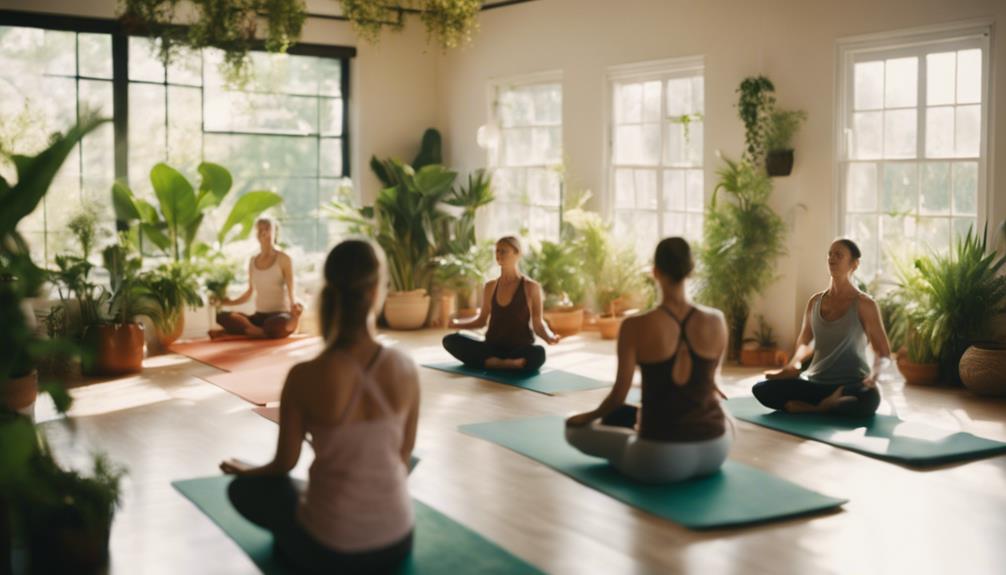What Is Lazy Yoga

Lazy yoga is a gentle, restorative form of yoga that emphasizes relaxation and mindfulness over intense physical exertion. This increasingly popular practice is designed for those looking to unwind, de-stress, and promote overall well-being without the high-energy, fast-paced routines often associated with traditional yoga. In this article, we will explore what lazy yoga is, its benefits, the different types of lazy yoga, and how you can incorporate it into your daily life.
Understanding Lazy Yoga: A Gentle Approach to Wellness
Lazy yoga is a style that encourages practitioners to slow down and focus on their breath while engaging in simple postures and stretches. Unlike more vigorous forms of yoga, lazy yoga is perfect for individuals of all ages and fitness levels. It typically involves longer-held poses, gentle movements, and a focus on relaxation techniques such as deep breathing and mindfulness. This practice is particularly beneficial for those dealing with stress, anxiety, or physical limitations who may find traditional yoga too demanding. By prioritizing comfort and relaxation, lazy yoga creates a safe space for individuals to reconnect with their bodies and minds.
The Benefits of Lazy Yoga: More Than Just Relaxation
The benefits of lazy yoga extend far beyond simple relaxation. This practice can help improve flexibility, enhance mental clarity, and promote emotional well-being. Studies have shown that engaging in gentle yoga can reduce stress hormones, lower blood pressure, and improve sleep quality. Furthermore, lazy yoga encourages mindfulness, allowing practitioners to cultivate a deeper awareness of their thoughts and feelings. This heightened sense of awareness can lead to better emotional regulation and an overall sense of calm. Additionally, lazy yoga provides a perfect opportunity for individuals to practice self-care and nurture their physical and mental health.
Different Styles of Lazy Yoga: Finding the Right Fit for You
Lazy yoga encompasses various styles and approaches, each offering unique benefits. Some popular forms include Yin Yoga, Restorative Yoga, and Gentle Hatha Yoga. Yin Yoga focuses on deep stretching and holding poses for extended periods, allowing for the release of tension in the connective tissues. Restorative Yoga, on the other hand, uses props to support the body in gentle, restorative poses, promoting deep relaxation and rejuvenation. Gentle Hatha Yoga combines slower-paced movements with breath awareness, making it suitable for beginners and those seeking a more relaxed experience. Exploring these different styles can help you find the perfect lazy yoga practice that aligns with your personal preferences and needs.
Related Posts:
How to Get Started with Lazy Yoga: Tips for Beginners
Starting a lazy yoga practice is simple and accessible to everyone. First, create a calming environment in your home or find a peaceful space in nature. Gather any props you might need, such as a yoga mat, blankets, bolsters, or blocks, to support your practice. Begin by selecting a few gentle poses that resonate with you, such as Child’s Pose, Cat-Cow Stretch, or Seated Forward Bend. Take your time transitioning between poses, focusing on your breath and allowing yourself to fully relax into each stretch. You can also consider following online classes or guided sessions that specialize in lazy yoga to help you ease into the practice.
Incorporating Lazy Yoga into Your Daily Routine
Incorporating lazy yoga into your daily life doesn’t have to be time-consuming. Even dedicating just 10 to 15 minutes a day can yield significant benefits. Consider setting aside time in the morning to start your day with gentle stretches or in the evening to unwind before bed. You can also integrate lazy yoga into your workday by taking short breaks to perform simple stretches or mindfulness exercises. This practice can help reduce tension and improve focus, making it a valuable addition to your daily routine. Remember, consistency is key, so find a schedule that works for you and stick with it.
Common Misconceptions About Lazy Yoga: Debunking the Myths
Despite its growing popularity, there are still many misconceptions about lazy yoga. Some people may believe that it lacks intensity or physical benefits compared to more vigorous types of yoga. However, lazy yoga can be just as effective in promoting flexibility, strength, and mental clarity. Additionally, some may think that lazy yoga is only for those who are already relaxed or flexible, but this practice is inclusive and welcoming to everyone, regardless of their yoga experience or physical abilities. By debunking these myths, more individuals can feel empowered to explore lazy yoga and experience its transformative benefits.
Lazy Yoga for Stress Relief: A Path to Mindfulness
One of the primary reasons individuals turn to lazy yoga is for stress relief. The combination of gentle movement, deep breathing, and mindfulness creates a powerful antidote to daily stressors. Engaging in lazy yoga prompts the body to enter a state of relaxation, activating the parasympathetic nervous system, which counteracts the effects of stress. By focusing on the present moment and letting go of distractions, practitioners can cultivate a sense of inner peace and tranquility. This practice not only helps alleviate immediate stress but also equips individuals with tools to manage stress more effectively in their daily lives.
Conclusion: Embrace the Benefits of Lazy Yoga
In conclusion, lazy yoga is a transformative practice that offers numerous benefits for both the body and mind. By prioritizing relaxation, mindfulness, and gentle movements, individuals can experience improved flexibility, reduced stress, and enhanced emotional well-being. Whether you are new to yoga or looking for a gentler alternative, lazy yoga is a versatile and accessible practice that can fit into anyone’s lifestyle. So why not take the plunge and explore what lazy yoga has to offer? With just a few minutes each day, you can embark on a journey of relaxation and self-discovery, promoting a healthier and more balanced life.What Is Nadi Yoga